A different „Via crucis“ at St Paul's Church
- pauluskulturkirche
- Jul 20
- 7 min read
Updated: Aug 22
A summery search for hidden cross motifs in St Paul's Church - and another well-known Basel symbol.
Recently, our association received a somewhat mysterious enquiry from the Netherlands. Whether we knew anything about a wooden cross that Viennese artist Ernst Degasperi (1927-2011) is said to have created for St Paul's Church. Reason enough to go into the archives and investigate the cross motifs in the church in general. It turned out that in addition to the obvious ones, there are many not instantly visible.
Kreuz des Anstosses: Nachbildung eines Holzkreuzes von Ernst Degasperi
‘In the beginning was the cross’, one could say. What sounds completely anachronistic in a theological context makes sense in terms of church architecture, as the literal foundation of a church is usually a cross. This is no different for St Paul's Church, but the story begins even earlier: By 31 March 1897, a total of 54 designs for a second church building had been submitted to then St Leonard's parish - including design no. 48 by Robert Curjel and Karl Moser. Architectural competitions were held anonymously and instead of a name, the design was labelled with a motto, e.g. a slogan, a monogram or a symbol. Curjel/Moser chose a four-part circle, from whose purely geometric form a kind of programme could already be derived: The ground plan was to be cruciform, but the church interior was to be built as a circular building. The symbol is reminiscent of a Celtic cross or a Nordic wheel cross - a reference to the archaic-mystical references that would one day characterise the neo-Romanesque building.
Excerpt from the jury's report and visualisation from the submitted design by Curjel/Moser, both with the label ⴲ (April 1897).
The layout quotes some elements familiar from Eastern churches: The central nave is square and flanked by side aisles of equal length. The apse, the same size as the side aisles, is slightly offset to the rear to provide space for the altar area on the one hand and to compensate for the slight excess length of the central nave facing the entrance on the other. As a result, the church interior (including the apse) almost forms a Greek cross - without the front hall, which was originally sketched as an outdoor area. The rotunda makes the domed room look like an Orthodox church; the pulpit wall with its gilded mosaics is reminiscent of an iconostasis. From a bird's eye view, the spade- or cloverleaf-like shape resembles a Coptic cross.
The layout photographed from above - once in winter and once in summer - and drawn from below shows the longitudinal symmetry of the church building.
Moser not only used cross shapes from other denominations in the ground plan, but also in the ornamentation: a cross pattée, framed in a circle by two tendrils, is emblazoned on the front gable above the main portal. As everywhere in and around the church, such floral decorations bear witness to influences from the Arts and Crafts Movement, which Moser integrated into his historicist mix of neo-Romanesque and Art Nouveau. Although designed as an isosceles Greek cross, the slightly elongated longitudinal beam at the bottom and the framing tendrils are reminiscent of a Celtic cross.
The gable cross above the main entrance is also designed as a Greek cross.
Two further crosses pattées, here angularly canted, inconspicuously adorn the double doors at the main portal. The Calvary scene with Christ and the two thieves after the crucifixion - or less likely the depiction of the Trinity - is a possible reference.
The small crosses pattées above the hinged doors flanking the main entrance.
The crosses are not quite so easy to find in the church interior itself. Here, too, they are woven into the ornamentation of the room. With a watchful eye, they can be recognised in the colourful stained glass windows; they were created by the Lörrach artist Max Laeuger (1864-1952), but only in 1903/04 due to a lack of funds. The crucifixion window, for example, required collections from the parish's children's school pupils, which was inscribed at the bottom of the window: ‘donated by the children’. Two crosses are visible in this window: the Holy Cross as a traditional Latin cross is painted light blue and almost merges with the darker sky blue behind it. Christ is surrounded by a blood-red halo (cross halo).
In the largest stained glass window - the rose window above the centre gallery - Christ is depicted within ‘Majestas Domini’, framed by the four symbols of the evangelists. This type of image is closely related to the ‘Pantocrator’ (mainly found in Orthodox churches), where he is depicted as Christ the Almighty. The honorary title ‘κύριος’ (kýrios, ‘Lord’), coined by the apostle Paul, is likely to have persuaded the parish council to integrate this type of icon into St Paul's Church. However, they did not follow the original design of showing Christ the King with the ‘Book of Life’, but instead chose the orb (globe with cross) as the symbol of dominion. Christ is surrounded by a golden cross halo.
The crucifixion window and the rose window - the Holy Cross and the orb each in blue.
The most prominent cross is in Latin form on the right-hand side of the pulpit wall by the altar area. Christ is depicted with red hair and his head bowed. He carries the cross only halfway with his hands, a naked man helps to carry the longitudinal beam and directly behind him a nobly dressed man appears to be about to slap him. The impressive motif was designed by Heinrich Altherr (1878-1847) from Basel, but insufficient funding only allowed it to be realised in 1908 - by the ‘Compagnia Venezia Murano’ of the famous Salviati family of glassmakers.
The painted design and a copy of the mosaic section show the cross as a simple wooden construction.
Anyone who wants to find more cross motifs in the church must have a love for detail. They do exist - but they have less theological significance than a decorative supporting role. On the ceiling in the organ loft, for example, there is a small keystone with a golden, rounded Greek cross. Another one can be found in the stairwell on the capital of an ornamental column. An interesting curiosity is the keystone in the right-hand lateral nave: at first glance, it looks like a Greek cross, but because the arms are in a 7:6 ratio, it is actually an official Swiss cross, as defined to present day in the Coat of Arms Protection Act.
Two decorative crosses and the Swiss cross as the keystone of a lateral nave.
Greek crosses can also be seen in the fanlights of the front hall. Like Christ the King in the rose window, they are framed with feather-like decoration in blue and white. And if you climb to the very top of the spire, you will discover the same cross motif in the wooden supporting beams of the church tower. In a way, they are related to the symbol ⴲ chosen by Curjel/Moser at the very beginning.
An unexpected heaven's bridge from the front hall to the spire.
Speaking of support beams: Strut crosses are indispensable in timber frame construction and have been used for centuries as a structural aid to improve stability - in church towers, for example, for better distribution of roof loads (e.g. tiles, wind, snow). They are also known as St Andrew's crosses because their shape is reminiscent of the cross of St Andrew the Apostle. They are used decoratively in half-timbered houses, in St Paul's Church they have a purely functional value.
St Andrew's crosses as effective beam bracing and decoration of the tower floor doors.
Steel cross braces in the bell base also help to hold up the bells, which weigh several tons. There are no cross motifs on the bells themselves, but there is another symbol that every child in the city of Basel recognises: a Basel staff adorns each bell as a relief-like inscription.
And not only there: on the front of the tower, a hand stretches out the Basel staff towards the city. Above one of the tower windows, two Basel staffs tied by a bar recall the shared history of both half-cantons. There is also a Basel staff in the church interior - in the keystone of the left lateral nave with the year of the inauguration, mirrored in the Swiss cross.
The Basel staff was originally a bishop's crosier and therefore a liturgical instrument with religious symbolism.
The largest Basel staff on St Paul's Church is barely visible: the dragon-slaying archangel Michael is enthroned on the main gable as a bronze figure by Oskar Kiefer (1874-1938). Initial designs showed him traditionally with a cross lance and cross shield, but eventually a more dynamic depiction with an upraised sword was chosen - and a coat of arms shield with a Basel staff.
Design and final result of the statue of St Michael, focussing on the Basel staff shield.
To stay on top for a moment: How was the highest point of the church at 63 metres actually decorated? Protestant Reformed churches traditionally have no tower crosses. St Paul's Church is an exception here: it has a radiant cross, a gilded tower cross around 3 metres long with an aureola around the intersection - here, too, a different variant was realised than originally planned, which again refers to the symbol ⴲ of the first design by Curjel/Moser.
The tower cross of St Paul's Church, a rarity for a reformed church.
The tower cross is thus exemplary for the relatively rich decoration, which is atypical for a Reformed church building. However, no exception was made for the altar cross, which was not designed for St Paul's Church. The Dutch question of the wooden cross by Ernst Degasperi therefore remains unanswered. No reference to it has yet been discovered.
A final cross motif, which was planned for St Paul's Church, was to have been created in the garden in front of the church - as a lawn pattern or flower mosaic in the form of a cross pattée. The idea was not realised, as was the idea of a fountain basin (explicitly requested by Moser) in the same place. (Addendum: Another cross pattée was noticed later in the central keystone of the choir chapel.)
Text and research by David Rossel
Photos by Frederic Dougoud, David Rossel, Leon Schweikert, Marijke Volgers and the ERK BS archives




















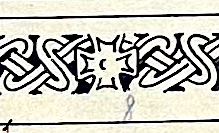







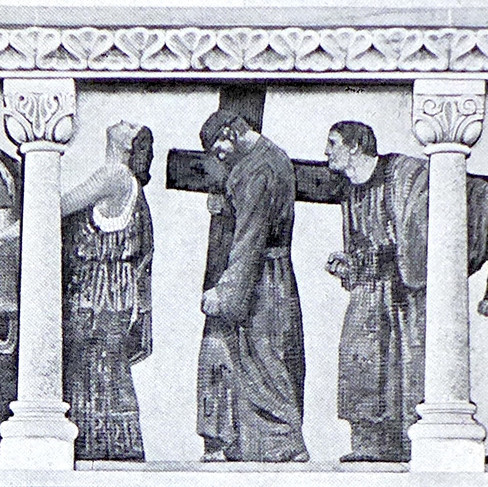

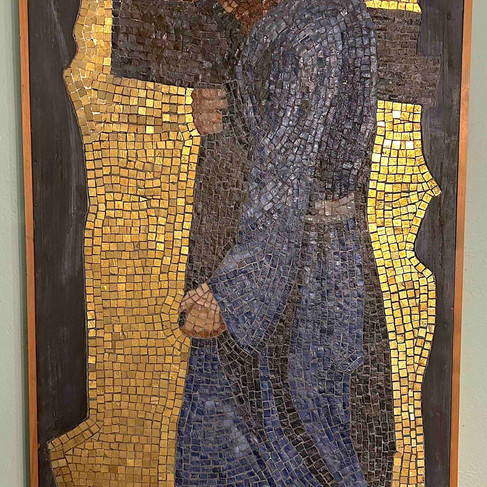





















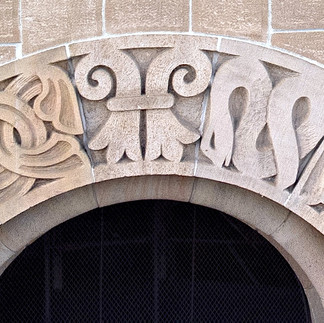





















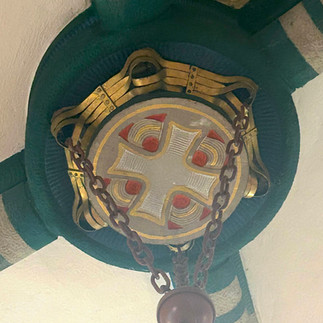
Comments